Condé Nast Traveler: Seeing a Beloved Slice of Southeast Asia Anew on an Oceania Cruise
By Ashlea Halpern | 04-01-2024 |
It's 10 p.m. and I'm riding pillion on a vintage Vespa through the traffic-choked streets of Ho Chi Minh City. Hair is lashing my face and sweat is pouring off my brow. My baby-faced driver doesn't speak a lick of English, nor I Vietnamese, but I know my euphoric smile says it all: I'm having the time of my life.
A younger me might have recoiled at the idea of whizzing through this buzzy hornet's nest of motorbikes on an organized tour, sampling frogs' legs with fish sauce in one district and wood-fired shrimp crepes in another. Back then I lived out of a 35-liter rucksack, pinballing through dozens of countries as a “digital nomad” a decade before Instagram made the label so loathsome.
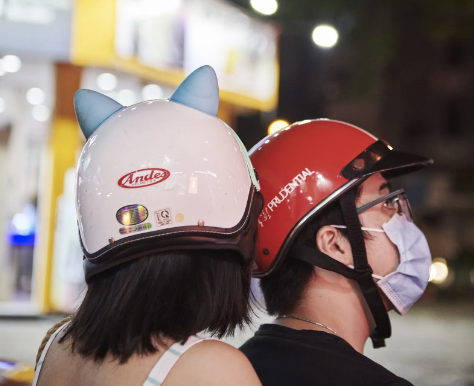
Yet here I am: 41, married with a toddler, 80-plus countries under my belt, and more open-minded than ever. Eleven days prior I had boarded Oceania Cruises' Insignia, an elegant 670-passenger ocean liner refurbished in 2018, for a 15-day, 5-country tour of Southeast Asia that would end in Bangkok, where I had lived in my 30s. To amp up this already-ambitious itinerary, I reached out to cruise expert Mary Jean Tully, founder and CEO of Tully Luxury Travel and one of Traveler's longest-running Top Travel Specialists. The Vespa tour in Ho Chi Minh City was her doing—as was the Raffles Singapore, which she recommended for pre-embarkation.
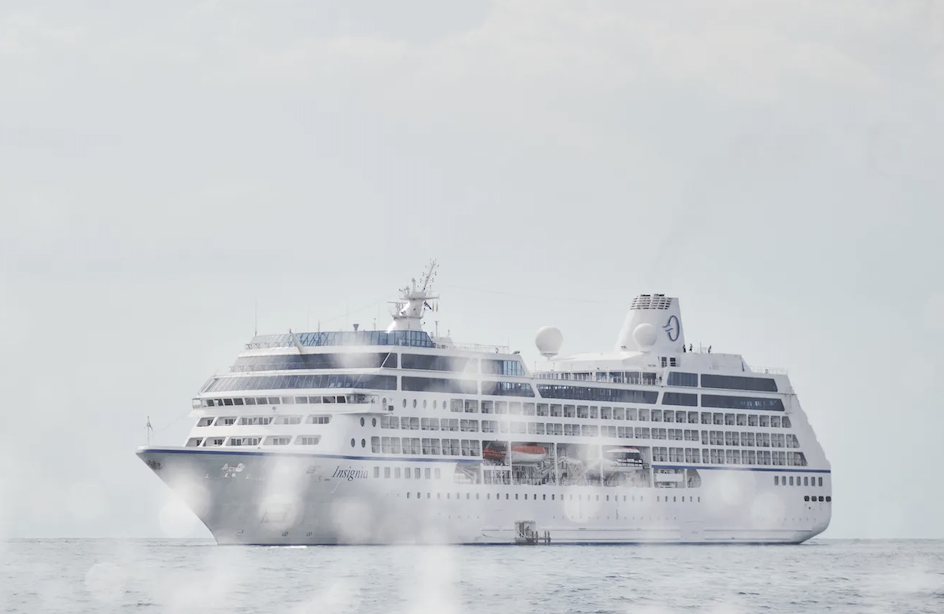
When I land at Singapore's Changi Airport, I am bowled over by the humidity; somehow it's always heavier than I remember. The Raffles's breezy marble colonnades are a welcome respite, as are the rosy pink Singapore slings, invented here at the Long Bar in 1915 by Hainanese bartender Ngiam Tong Boon. Flinging peanut shells onto the tile floor, punkah fans waving lazily overhead, I watch workers shake and strain sling after ginny sling and wonder if they ever get to make anything else.
Soon after, I'm aboard the Insignia, watching as the Lion City shrinks away. Roaming its corridors, I immediately notice the souvenir magnets (Sri Lanka, Seychelles, Dubai) on several stateroom doors. I'm intrigued to discover that only 150 of the 535 guests boarded in Singapore. Most everyone else are world cruisers, a.k.a. WCs, traveling 180 days from San Francisco. They're like The Real World at sea, with all the cliques and conflicts that suggests. “You learn quickly who the complainers are and how to avoid them,” one WC tells me over fresh sushi and a hand-carved roast. She tells me likes us segmenters, a.k.a. segmentarians, a.k.a. segmentalists, because we bring “fresh blood” to the ship.
Our first port stop is Bintan, a resort island in Indonesia's Riau Archipelago. Strolling the Chinese fishing hamlet of Senggarang, I wave to smiling uniformed grade-schoolers belting out the national anthem and spend a meditative moment inside Tian Shang Miao, a shrine that has been partially swallowed by the pretzeled roots of a greedy banyan tree. When a man as old as time asks me to join him for coffee, I regretfully decline; I have a boat to catch.
When the Insignia docks in Chân Mây, Vietnam, a few days later, Mary Jean has arranged a private outing to Huế, about 38 miles south. Once we leave the factory-cluttered coastline, the landscape takes a dramatic turn, as soft-focus emerald hills ripple across the horizon. Cows mosey through the streets, stray dogs nip at one another's soiled collars, and kids play badminton on cracked sidewalks. Our visit starts at the UNESCO-recognized imperial palace within a walled citadel once ruled by the Nguyễn dynasty. My guide, Dung, has been leading tours in this region for 36 years; he tells harrowing stories of his father escaping a Communist reeducation camp before delving deep into the Confucian and French colonial influences that helped to shape these sprawling grounds. Together we admire the enamel mosaics inlaid in triple-arched gates, run our fingers over the bomb scars left on bronze castings from the 1968 Tet Offensive, and smell the fetid flowers sprouting from the cannonball fruit trees lining the royal courtyard.
Afterward, Dung leads me to the craft village of Thủy Xuân, where upon spotting me, a vendor sets her phone down and begins to demo the ancient art of incense rolling—the kind of contrived setup that makes me wince. Sensing my annoyance, Dung has a better idea. At a nearby family home, half a dozen neighbors are chiseling away at sandalwood wedged between their bare feet. A sinewy man with a cigarette dangling from his lips tells me he's been carving for eight hours a day, seven days a week, for more than 20 years. He sells the sandalwood hearts to the Big Incense factories in Đà Nẵng and Ho Chi Minh City, where they are pulverized into sawdust, mixed with cinnamon, pressed into stick form, dyed lurid colors, and wholesaled back to vendors in Thủy Xuân.
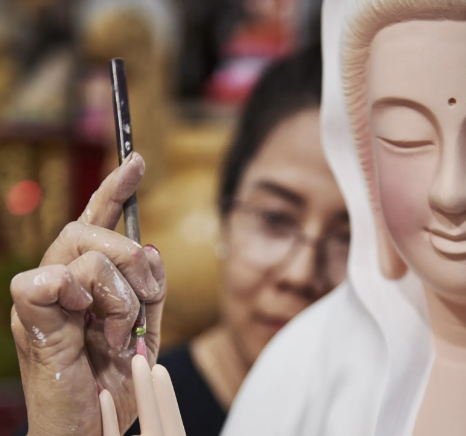
I present a similar challenge to my guide Đú'c in Ho Chi Minh City, where Mary Jean had set up a half-day tour in an open-top, ex-Vietcong military jeep. Đú'c, who moonlights as a fisherman and rice farmer, has been guiding here for nearly three decades. After visiting Giác Lâm Temple, where traditionally costumed worshippers are rehearsing for the Buddha's upcoming birthday celebration, we hit the 140-year-old Bình Tây market in Cholon. Half a million ethnic Chinese live in Ho Chi Minh City, Đú'c tells me, many with roots dating to the 1600s. They buy everything here: salted turnips, century eggs, dried kumquat, rolls of cinnamon bark as thick as Bible scrolls, even shark fins.
Outside Bình Tây, we pull up tiny plastic stools in front of a street vendor and order nem nướng, succulent pork sausage skewered on bamboo and grilled over an open flame. Afterward, we stumble across a family chugging Tiger beers, a mound of crumpled cans at their flip-flopped feet. They crack open a cold one and teach me the proper way to say “Cheers!” (“Mô.t, hai, ba—yo!”).
A third of my trip happens away from terra firma, cruising the South China Sea and the Gulf of Thailand. The beauty of a sea day is that it is entirely mine, to be as lazy or ambitious as I please. I delight in listening to the whiff-whiff-whiff of table tennis and the bony clacking of mah-jongg tiles, fielding Battle of the Sexes trivia questions on everything from scurvy to Silly Putty, sipping flat whites beneath flickering sconces in the ship's Italianate coffee shop, and sitting for high tea and scones scored by a string quartet in its lounge. I indulge in a caviar facial that leaves my skin as vulcanized as a Wellington boot and spend hours curled up like a fiddlehead fern on a leather wingback chair in the library—a Masterpiece Theater–esque sanctuary with a faux fireplace and an impressive selection of romance novels. Come evening, I treat myself to dinner with tuxedoed waiters chauffeuring fork-tender steaks beneath silver cloches and then settle in for the night's entertainment: Motown Showdowns, ventriloquist acts, oldies dance parties, and late-night karaoke sessions where, invariably, some passenger will belt out “Waterloo” or “Sweet Caroline.”
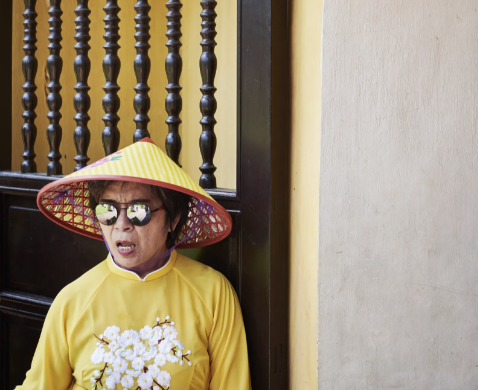
These days also give me time to study the ever-changing blues (royal, Prussian, Dodger, steel) of the vast, velvety sea. In the wee hours, wide-awake with jet lag, I plant myself on my balcony and watch lightning flash across silver swells, the bathwater-warm breeze sticking to my skin. I think about the passengers I've met: the widow venturing back into the world, the blind man waxing rapturously about the sounds he'd heard on shore excursions, the septuagenarians gossiping about good books and bad men (“What they don't know, they make up”). Then there are the crew members whose personalities roar to life if you just take a minute to talk to them: the Honduran waiter with impeccable taste in literature, the Ukrainian dancer conflicted over the war ripping his country apart.
It's fitting that my journey ends in Bangkok: the gritty city I adore so much, and the only home away from home I've ever known. What could Mary Jean possibly show me here, I wonder, that I haven't already experienced? After disembarking, I follow my affable guide Pok, a member of the Shan tribe from the northern province of Mae Hong Son, to Ban Baat, also known as Monk's Bowl Village, where a community of 50 artisans still make Buddhist alms bowls by hand. We hear them before we see them—the rhythmic clanging of hammers on steel echoing through the winding sois. The bowls have been forged this way since the late 18th century, and there is pride in every dent; it takes three days to produce a single vessel. Pok says you can tell the quality of a bowl just by knocking on it. The best ones, he adds, sound as melodic as bells.
Zipping through the streets of Bangkok in a tuk-tuk, dilapidated shophouses streaking across my periphery, I marvel again at the way the gold stupas glint under a fireball sun and strings of marigolds spill out of the wholesale flower market. Pok and I have plans to check out some galleries and a riverfront café in Charoenkrung, but we scrap them to summit the temple of Wat Saket. Dubbed Golden Mount, it is set atop the highest hill in Bangkok—344 steps up with 360-degree views of the city—and has a magnificent gilded chedi, a sacred marble structure enshrining relics of the Buddha.
Novice monks pad barefoot around the stupa's base, hands pressed together in prayer as they chant devotionals while sirens echo in the streets below. The cacophony is intoxicating, and that's when I realize: This wasn't just some cruise. It was a lesson in falling in love with a place all over again—fiercely, unapologetically, and when you least expect it.
How this trip was made
When I first mapped out this trip with Mary Jean Tully, founder and CEO of Tully Luxury Travel, I told her I had lived in Thailand and traveled extensively throughout Asia—and that I wanted to go beyond the usual tourist circuit. Several calls and emails later, we zeroed in on three marquee ports from Oceania Cruises' 5-country, 15-day “Southeast Asia Array” tour—Huê′, Ho Chi Minh City, and Bangkok—where Mary Jean was certain her on-the-ground connections could give me a new perspective. She and her team also excel at arranging overland excursions. Had I not been to Angkor Wat twice already, she could have crafted a Cambodia extension that would thrill any first-timer. The drivers and guides she selected were friendly and knowledgeable; more importantly, they were willing to change up the itinerary on the fly. If a stop wasn't to my liking, we swapped in something better—like visiting Bangkok's Golden Mount at sunset. Those last-minute changes led to several of my favorite moments from the trip.
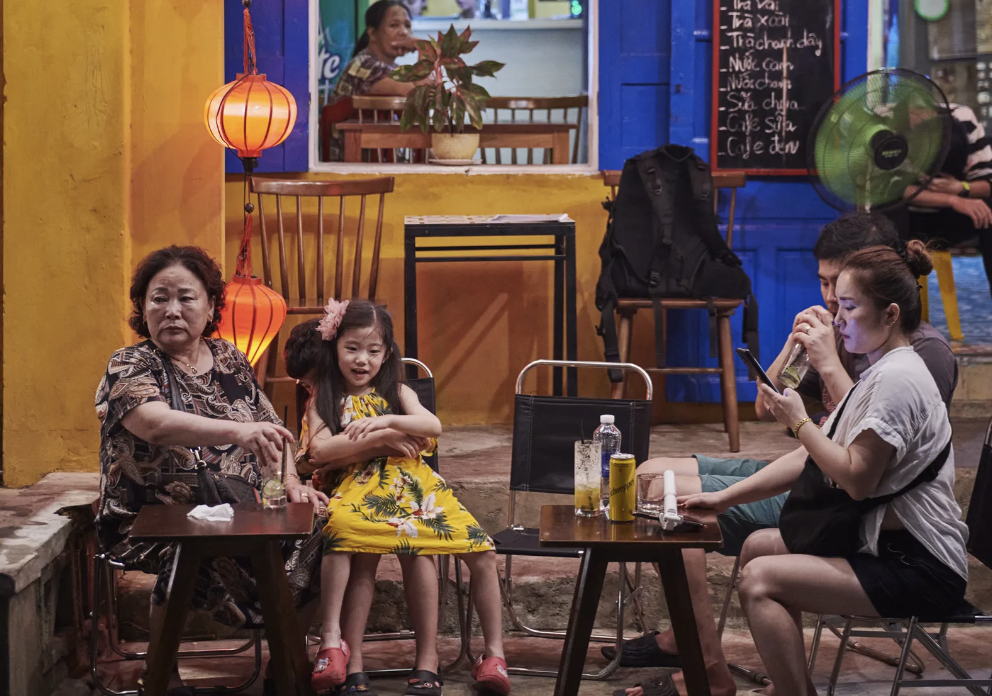
The highlights
Day 4
The Insignia brings us to Brunei, one of the few Asian countries I’ve yet to visit. An absolute monarchy ruled by an almighty sultan, it’s a fleck of land whose astonishing wealth was built on petroleum and natural gas. While the gold-domed government buildings and extravagant royal mosque are undeniably photogenic, I’m more intrigued by Muara’s millenia-old water village and the people who inhabit it. Hop-scotching my way along its janky wooden boardwalks, I meet a boy fishing for anchovies in the crocodile-infested waters and nibble on traditional Bruneian sweets in the private family home of a Formula Three power boat racer.
Day 7
You know a port stop is good when crew members flock to the top deck, phones in hand, to document the landing for their families back home. That’s how it is the morning we pull into Ha Long Bay, a UNESCO World Heritage Centre in Vietnam’s Gulf of Tonkin. Jagged limestone karsts rise from the gray seawater like so many jagged, unbrushed teeth. A retired postal worker I met at high tea the day before is out there, too, gobsmacked by the beauty of it all. “Never seen anything like this,” he murmurs, then types the word karst into his phone so he can impress his “know-it-all kids” later. Today’s half-day excursion ferries cruisers out to Động Thiên Cung via junk boat. Tacky neon lighting aside, the cave looks like something out of Goonies: Its soaring caverns are 10 blessed degrees cooler than outside and the rock formations are pure drama.
Day 8
On a cruise-organized stroll through Hoi An’s old town, a Disney-esque UNESCO World Heritage Centre illuminated with scores of paper lanterns, I slip away from the throbbing tourist scrum and down a network of lesser-trafficked laneways. A few streets removed from the vendors hawking conical hats and ‘Pho King’ T-shirts, this is where the real Vietnam springs to life — at a recital with tiny dancers twirling before a sea of beaming parents; in the scrawny old men with tank tops rolled up to their nipples, napping on motorbikes; and in the spatchcocked birds, beaks still on, roasting on spits.
Day 11
The Vespa tour that Mary Jean booked also included two late-night stops: an acoustic open mic at a coffeehouse where the only thing sweeter than the cà phê sữa da is a young crooner’s cover of Englebert Humperdinck’s “Quando, Quando, Quando.” This is followed by a packed club where an English-speaking Vietnamese singer dressed like a K-pop star brought down the house with a spectacular Spanish rendition of “Despacito.”
Day 12
An Oceania excursion plying the silty-brown waters of the Mekong Delta – first via river boat, then in a hand-paddled longboat with eyes painted on the front (a tiger deterrent back in the day, I’m told) — stops at a narrow island that is home to some 6,000 villagers and a bustling royal jelly trade. After sipping tea spiked with bee pollen, we are served trays of fresh-cut pomelo and dragonfruit and serenaded with traditional instruments like the đàn sến, which sounds like a twangy Vietnamese banjo.
Day 14
A cruise excursion to Koh Samui takes us on a whirlwind tour of the Thai island’s campiest temple complexes. At the flamboyant Wat Plai Laem, we gawp at an 18-armed statue of the goddess Guanyin; at Wat Phra Yai, lorded over by a 39-foot golden Buddha, we shake fortune sticks until we find numbers and messages that resonate; and at Wat Khunaram, all eyes are on the Ray-Ban-wearing mummified body of Luang Pho Daeng, a monk who died while meditating 50 years ago.
Day 15
Post-debarkation, I check into a sleek suite at Banyan Tree Bangkok and head up to Moon Bar, a rooftop boîte perched 61 vertigo-inducing floors above the city. Hi-so Thais in bandage dresses take selfies with lemongrass cocktails while guys with popped collars slurp yuzu-laced oysters. It’s all terribly cheesy but, for once in my life, I withhold judgment and just enjoy the view — this Tetris'd skyline, shimmering against an inky-black night, in a city that will forever capture my imagination.
Read the full story on Condé Nast







